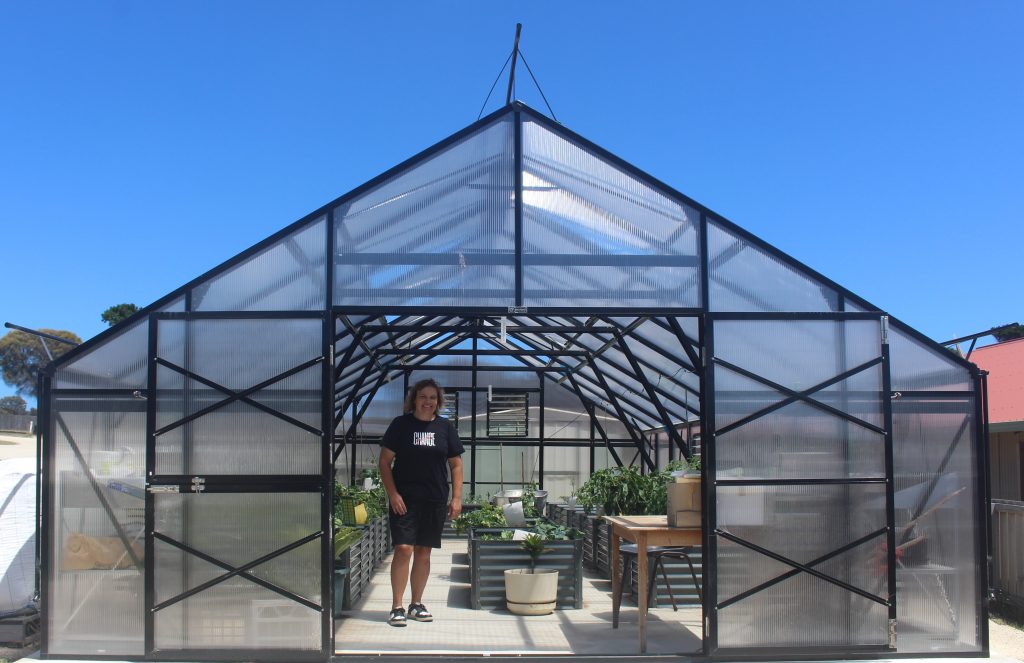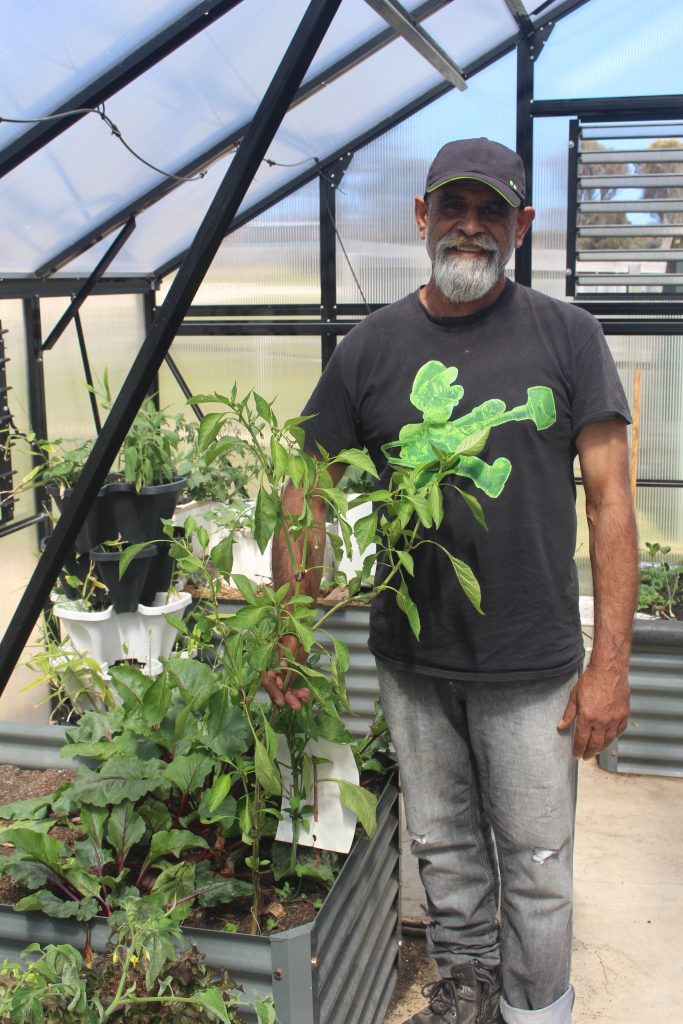truwana/Cape Barren Island’s greenhouse
Posted on August 8, 2024
Content warning: Aboriginal and Torres Strait Islander people should be aware that this article contains the name and images of a deceased person.

Growing social connection through gardening in one of Tasmania’s most remote places
truwana, also known as Cape Barren Island, is about as remote as you can get.
It’s an island off an island (Flinders) off an island (lutruwita/Tasmania) in the notoriously wild and unpredictable Bass Strait. It’s owned by the Tasmanian Aboriginal community, and 80 out of the 120 or so residents identify as Tasmanian Aboriginal.
Living so remotely can have significant and far-reaching impacts on people’s overall wellbeing, including on their diets and mental health, due to limitations in access that are not known to city dwellers.
On truwana, the Cape Barren Island Aboriginal Association (CBIAA) is delivering vital and innovative services for people living on the island. These services are aimed at improving health, social and emotional wellbeing, an effective preventive health measure.
Thanks to funding by the Australian Government through Primary Health Tasmania, a brand-new greenhouse has been erected and now takes pride of place at krakani house community centre, a central gathering place that fosters wellbeing in the community.
Not only is the greenhouse having a positive influence on people’s diets, but it’s also having a huge impact on their mental health by strengthening social ties and growing confidence.
As the vegetables grow in the greenhouse, so do the social connections of the island’s menfolk, says Tessa Atto, health programs manager, krakani house.
“It came about as a request from community, and thinking about how great it would be to grow our own produce on the island for the community,” Tessa says.
“To get fresh produce here, it’s quite difficult. It might look a bit tired by the time it gets here and is on the shop. Sometimes it’s not useable.
Tessa says it’s important that Tasmanian Aboriginal people’s ideas are listened to from the beginning, not just once a project is underway.
“That’s when we get the most benefit. Because they’re involved through the whole process, it doesn’t mean it’s a decision being made about them – it’s a decision that they are involved in, and it’s an idea that comes from them.”
A very welcome positive impact of the greenhouse has been strengthening community connections and creating a space for the island’s men to come together for a yarn.
Terry Maynard is one man who is enjoying the benefits of the greenhouse. He is a long-time resident of truwana, a proud Tasmanian Aboriginal man, and a keen gardener.
“It’s become a gathering spot for a group of us men to meet down here and have a yarn and water our plants,” he says.
“We’ve got another old bloke who lives down the road who’s got a greenhouse and he comes in and we exchange ideas.
“When you get a bit of stress in your life, you tend to drift away from each other. This pulls us back together.”
Terry’s blood pressure recently dropped, and he attributes much of his success to a changed diet from the greenhouse and feeling more physically and mentally healthy overall.
“My blood pressure was always high. I nearly fell off my chair when the doctor told me it was now good for a person half my age. Just through eating salads and fish every day,” he says.
“Only trouble we’ve been having is that Chris won’t share his worm poo!”
Chris Mansell has lived on truwana most of his life. He tends lovingly to the garden each day and enjoys getting his hands dirty.
“I like coming down and looking after the veggies. It keeps you going, keeps you busy,” he says.
“It sort of calms me down. Get in here, work by myself. You don’t even think about anything.
“You always see people down here. People take the veggies home and eat whatever they’ve grown.”
Building a greenhouse on a remote island was not without its challenges, says Tessa.
“It’s just all trial and error, learning and sharing,” she says.
“There’s also lots of wonderful male bonding happening on island which is fantastic, so it’s been a great project to be involved in.
“I often look out my window and see three, four or five fellas in there having a yarn, having a catch up with Chris and talking about what’s working, what’s not.
“You can see the happiness, and the conversations are positive. It’s been fantastic for mental health across the board, I think.”
“Remoteness does make things tricky but hey, we got there with this project, and we’re really pleased we did,” Tessa says.
Social and emotional wellbeing services
Primary Health Tasmania has worked with seven organisations around Tasmania with strong connections to local Aboriginal communities to co-design services aimed at supporting social and emotional wellbeing.
The organisations are:
- the Tasmanian Aboriginal Centre
- Karadi Aboriginal Corporation
- South East Tasmanian Aboriginal Corporation
- Cape Barren Island Aboriginal Association Incorporated (north)
- Flinders Island Aboriginal Association Incorporated
- Rural Health Tasmania’s No.34 Aboriginal Health Service
- Circular Head Aboriginal Corporation
Want to know more? Go to tasp.hn/SEWB

